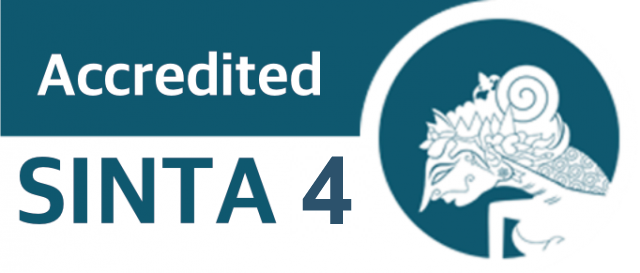Analysis of Creative Thinking Ability and Learning Outcomes Through the Treffinger Learning Model
DOI:
10.29303/jpm.v20i2.7942Published:
2025-03-30Issue:
Vol. 20 No. 2 (2025)Keywords:
Creative Thinking; Learning Outcomes; Treffinger ModelArticles
Downloads
How to Cite
Downloads
Metrics
Abstract
This study aims to describe creative thinking skills and learning outcomes through learning with the Treffinger model. The subjects of this study were Biology Education students who took the Animal Structure course in the odd semester of the 2024/2025 academic year, with a total of 24 students. Creative thinking data were collected using instruments with a Likert scale, while tests collected learning outcomes. The collected data were analyzed qualitatively into five categories. The results of the analysis of creative thinking skills showed students with the very good category as many as 11 people (46%) and the good category 13 people (54%). Students with a very good category had the most fluency indicator of 19 people, while those with the good category had the most elaboration indicator for 16 students. Learning outcomes are more in the good ranking of 16 people than the very good category (8 people). Through learning the Treffinger model, creative thinking ability, and learning outcomes of animal structure, students vary in the categories of good and very good.
References
A. M. I. T. Asfar, A. M. I. A. Asfar, A. H. Asfar, and A. Kurnia, “Landasan pendidikan: hakikat dan tujuan pendidikan,” J. Pendidikan dan Edukasi, vol. 2, no. 1, pp. 1–15, 2020.
N. M. Dwijayani, “Development of circle learning media to improve student learning outcomes,” in J. Phys.: Conf. Ser., vol. 1321, no. 2, p. 022099, Oct. 2019, doi: 10.1088/1742-6596/1321/2/022099.
D. H. W. Sanjaya, Strategi Pembelajaran Berorientasi Standar Proses Pendidikan. Jakarta: Prenada Media Group, 2006.
R. A. Pramestika, H. Suwignyo, and S. Utaya, “Model pembelajaran creative problem solving pada kemampuan berpikir kreatif dan hasil belajar tematik siswa sekolah dasar,” Doctoral dissertation, State University of Malang, 2020, doi: 10.17977/jptpp.v5i3.13263.
Trianto, Mendesain Model Pembelajaran Inovatif–Progresif. Jakarta: Kencana Prenada Media Group, 2011.
M. Sobri, N. Nursaptini, and S. Novitasari, “Mewujudkan kemandirian belajar melalui pembelajaran berbasis daring di perguruan tinggi pada era industri 4.0,” J. Pendidikan Glasser, vol. 4, no. 1, pp. 64–71, 2020, doi: 10.32529/glasser.v4i1.373.
M. Huda, Model-Model Pengajaran dan Pembelajaran: Isu-Isu Metodis dan Paradigmatis. Yogyakarta: Pustaka Pelajar, 2013.
S. U. Munandar, Mengembangkan Bakat dan Kreativitas Anak Sekolah. Jakarta: Gramedia, 1985.
Y. D. Haryanti and D. S. Saputra, “Instrumen penilaian berpikir kreatif pada pendidikan abad 21,” J. Cakrawala Pendas, vol. 5, no. 2, pp. 454–547, 2019, doi: 10.31949/jcp.v5i2.1350.
S. Arikunto, Prosedur Penelitian. Jakarta: Rineka Cipta, 2014.
A. Shoimin, Inovatif dalam Kurikulum 2013. Yogyakarta: Ar-Ruzz Media, 2014.
U. Munandar, Pengembangan Kreativitas pada Anak Berbakat. Jakarta: Rineka Cipta, 2012.
D. Susiningrum, “Pengembangan instrumen penilaian kemampuan berpikir kreatif pada mata pelajaran ekonomi kelas X SMA Hang Tuah 1 Surabaya,” J. Pendidikan Ekonomi (JUPE), vol. 6, no. 3, 2018.
K. Kasmianti, “Pengaruh kemampuan berpikir kreatif dan kemampuan berpikir matematik terhadap kinerja guru di SMP Negeri 5 Palopo,” Doctoral dissertation, Institut Agama Islam Negeri (IAIN) Palopo, 2020, doi: 10.33772/jpbm.v5i2.15749.
L. N. Ancar, S. A. Freeman, and D. W. Field, “Professional connections through the Technology Learning Community,” J. Technol. Stud., vol. 33, no. 2, pp. 73–78, 2007, doi: 10.21061/jots.v33i2.a.2.
K. Abu-Alghayth, P. Jones, D. Pace-Phillips, and R. Meyers, “Through the Looking Glass: Lesson Study in a Center School,” Int. J. Educ. Methodol., vol. 6, no. 2, pp. 423–433, 2020, doi: 10.12973/ijem.6.2.423.
S. P. Kunandar, Guru Profesional Implementasi Kurikulum Satuan Pendidikan (KTSP) dan Sukses dalam Sertifikasi Guru. Jakarta: Raja Grafindo Persada, 2010.
R. Trijaya, “Pengaruh model PBL terhadap kemampuan berpikir kreatif ditinjau dari kemandirian belajar siswa,” J. Pendidikan Dasar, vol. 1, no. 2, pp. 1–14, 2020, doi: 10.23887/jpdi.v2i1.2686.
J. H. Nunaki, I. Damopolii, N. Y. Kandowangko, and E. Nusantari, “The effectiveness of inquiry-based learning to train the students' metacognitive skills based on gender differences,” Int. J. Instr., vol. 12, no. 2, pp. 505–516, 2019, doi: 10.29333/iji.2019.12232a.
R. Prihatin, E. Wiyanarti, and Y. Kurniawati, “The analysis of students’ creative thinking skills through the implementation of the project-based learning model in social studies learning,” Int. J. Pedagogy of Social Studies, vol. 6, no. 2, pp. 9–16, 2021, doi: 10.17509/ijposs.v6i2.28622.
R. Mursid, A. H. Saragih, and R. Hartono, “The effect of the blended project-based learning model and creative thinking ability on engineering students' learning outcomes,” Int. J. Educ. Math. Sci. Technol., vol. 10, no. 1, pp. 218–235, 2022, doi: 10.46328/ijemst.2244.
A. Wahyudi, “Profil keterampilan berpikir kritis dan kreatif calon guru kimia pada perkuliahan biokimia,” Orbital: J. Pendidikan Kimia, vol. 4, no. 2, pp. 99–110, 2020, doi: 10.19109/ojpk.v4i2.6612.
L. F. Masitoh, “The effectiveness of the problem-based learning (PBL) approach viewed from the students’ mathematical creative thinking ability,” J. Pendidikan Matematika Indonesia, vol. 4, no. 2, pp. 47–52, 2019, doi: 10.26737/jpmi.v4i2.699.
Y. Yamin, A. Permanasari, S. Redjeki, and W. Sopandi, “Implementing project-based learning to enhance creative thinking skills on water pollution topic,” JPBI (J. Pendidikan Biologi Indonesia), vol. 6, no. 2, pp. 225–232, 2020, doi: 10.22219/jpbi.v6i2.12202.
B. P. Santoso and F. E. Wulandari, “Pengaruh pembelajaran berbasis proyek dipadu dengan metode pemecahan masalah pada keterampilan berpikir kreatif siswa dalam pembelajaran IPA,” J. Banua Sci. Educ., vol. 1, no. 1, pp. 1–6, 2020, doi: 10.20527/jbse.v1i1.3.
U. Munandar, Pengembangan Kreativitas Anak Berbakat. Jakarta: Rineka Cipta, 2016.
A. O. Celik and E. B. Guzel, “How to improve a mathematics teacher’s ways of triggering and considering divergent thoughts through lesson study,” Int. Electron. J. Math. Educ., vol. 15, no. 3, p. em0605, 2020, doi: 10.29333/iejme/8461.
I. Malini, N. Lestariningsih, and R. Nirmalasari, “Pengaruh model pembelajaran Treffinger berbantuan media gambar terhadap kreativitas dan hasil belajar siswa pada materi sistem peredaran darah,” J. Ilmu Pendidikan (JIP) STKIP Kusuma Negara, vol. 13, no. 2, pp. 109–119, 2022, doi: 10.37640/jip.v13i2.1019.
Author Biographies
Kusmiyati Kusmiyati, Biology Education Department, Faculty of Teacher Training and Education, University of Mataram
I Wayan Merta, Biology Education Department, Faculty of Teacher Training and Education, University of Mataram
License
Copyright (c) 2025 Kusmiyati Kusmiyati, I Wayan Merta

This work is licensed under a Creative Commons Attribution 4.0 International License.
The following terms apply to authors who publish in this journal:
1. Authors retain copyright and grant the journal first publication rights, with the work simultaneously licensed under a Creative Commons Attribution License 4.0 International License (CC-BY License) that allows others to share the work with an acknowledgment of the work's authorship and first publication in this journal.
2. Authors may enter into separate, additional contractual arrangements for the non-exclusive distribution of the journal's published version of the work (e.g., posting it to an institutional repository or publishing it in a book), acknowledging its initial publication in this journal.
3. Before and during the submission process, authors are permitted and encouraged to post their work online (e.g., in institutional repositories or on their website), as this can lead to productive exchanges as well as earlier and greater citation of published work (See The Effect of Open Access).











